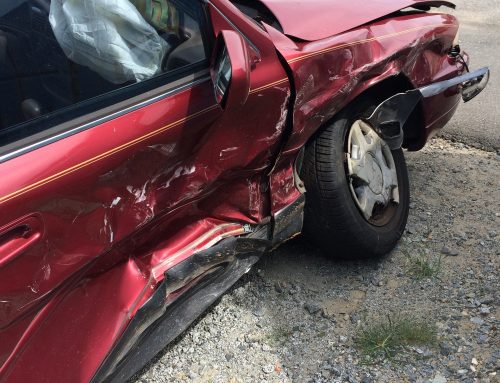Florida is still feeling the effects of Tropical Storm Debby this week. While the storm never developed into a major wind event, it did result in unprecedented amounts of rainfall. This caused flooding across the state, whether in the form of very wet roads or completely submerged road surfaces.
Driving on wet or flooded roads presents a range of hazards that can significantly increase the risk of accidents and vehicle damage. Understanding these dangers is crucial for maintaining safety and avoiding potentially fatal situations.

- Loss of Traction: When roads are wet, the friction between the vehicle’s tires and the road surface decreases. This reduction in traction makes it more difficult for tires to grip wet roads, increasing the likelihood of skidding. Hydroplaning is a particularly dangerous phenomenon that occurs when a layer of water prevents tires from making contact with the road. As a result, the vehicle can slide uncontrollably, often without warning.
- Reduced Visibility: Heavy rain, fog, and water spray from other vehicles can significantly impair visibility. When driving in such conditions, it becomes challenging to see road signs, traffic signals, and other vehicles. Reduced visibility not only makes it harder to navigate but also to judge distances accurately. This can lead to situations where drivers are unable to react promptly to sudden changes or hazards, often causing accidents.
- Increased Stopping Distance: Wet roads require a longer distance to bring a vehicle to a complete stop. The combination of reduced traction and increased stopping distances means that drivers need to maintain a greater distance from the vehicle in front. Failing to do so can result in rear-end collisions if the vehicle in front has to brake suddenly.
- Flooded Roads: Flooded roads introduce a unique set of dangers. Water on the roadway can conceal deep potholes, debris, and other obstacles that can damage vehicles or cause them to lose control. Furthermore, driving through deep water can cause engine stalling or damage to the vehicle’s electrical system. Even shallow water can pose risks, as it might lead to loss of control if it causes hydroplaning or if the road beneath is weakened.
- Aquaplaning: Aquaplaning, or hydroplaning, occurs when a layer of water builds up between the tires and the road surface. This can cause the vehicle to lose traction and slide uncontrollably along the wet roads. It is especially likely when driving at high speeds or if the tires are worn out. Aquaplaning can lead to serious accidents if the driver is unable to regain control of the vehicle.
- Increased Risk of Collisions: The combination of reduced visibility, longer stopping distances, and decreased traction makes collisions more likely. Drivers might not see other vehicles or obstacles in time to avoid them, and the extended stopping distances mean that sudden braking can lead to accidents. Additionally, the reduced traction can make it difficult to navigate sharp turns or curves safely.
- Vehicle Damage: Driving through flooded areas can cause significant damage to a vehicle. Water can enter the engine, transmission, and other critical components, leading to mechanical failures. Even if the water level is relatively low, the vehicle’s undercarriage can still suffer from debris and contaminants carried by the floodwater. Prolonged exposure to such conditions can lead to corrosion and other long-term issues.
- Driving Behavior: Drivers often underestimate the risks associated with wet or flooded roads, leading to unsafe driving behaviors such as speeding or aggressive maneuvers. This behavior compounds the hazards present and increases the likelihood of accidents. It’s essential for drivers to adjust their driving habits to match the conditions, including reducing speed, increasing following distances, and avoiding abrupt maneuvers.
- Emergency Situations: In severe flooding, roads can become impassable or dangerous to navigate. Emergency situations can arise where vehicles become stranded, requiring rescue or assistance. Attempting to drive through high water or dangerous conditions can exacerbate these situations, putting both the driver and emergency responders at risk.
Accidents on Wet Roads
Driving on wet roads or flooded areas poses multiple dangers. Understanding and mitigating these risks through cautious driving practices and proper vehicle maintenance is crucial for ensuring safety. Drivers should always adjust their speed, maintain increased following distances, and avoid driving through flooded areas when possible. By being aware of these hazards and taking appropriate precautions, the risk of accidents and damage can be significantly reduced.
However, if you were involved in a car accident caused by these conditions, be sure to protect your rights. Call Probinsky & Cole for a consultation and expert advice.







